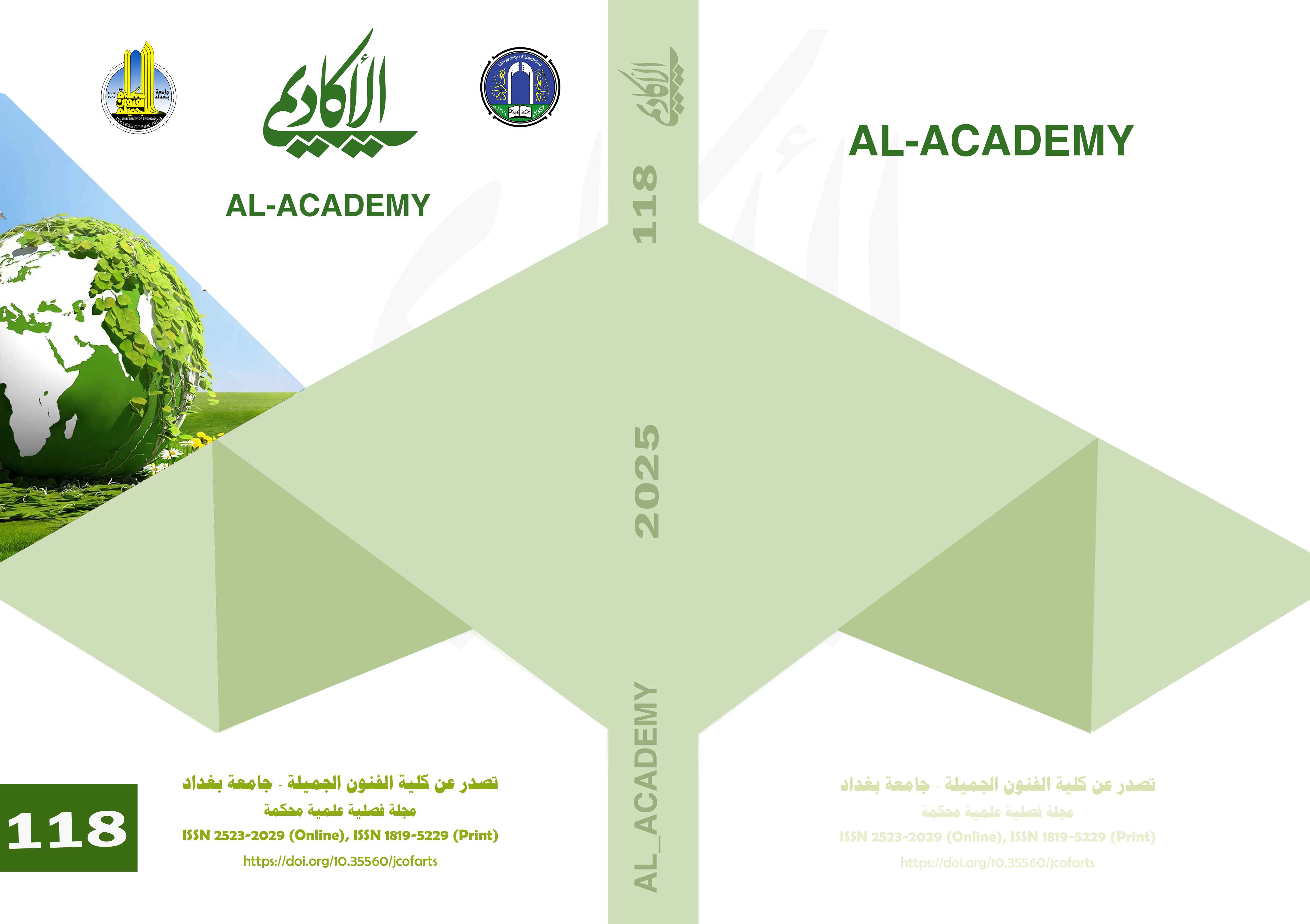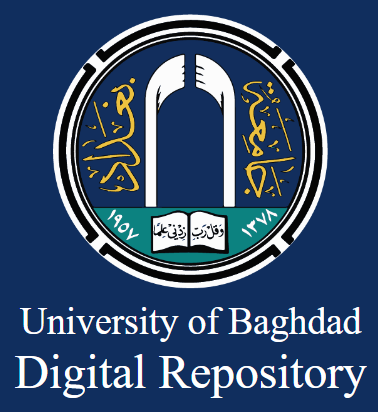The Imitation in the Paintings of Nineveh’s Artists
DOI:
https://doi.org/10.35560/jcofarts1678Keywords:
Imitation , Paintings , Nineveh’s ArtistsAbstract
This research, titled (The Imitation in the Paintings of Nineveh’s Artists), tackles study Nineveh’s Artists works, especially those of the city of Mosul, who tried to imitate the reality of the city with its different parts. The research consists of four chapters. Chapter One deals with the type of the problem and sets the objectives to know the essence and types of this imitation to reach the desired results. The chapter also contains the importance of the research, its limits, and the delineation of the terms.
Chapter Two contains the theoretical framework on two topics; the first is under the title civilization, the heritage, and the nature of Mosul city. The second section came under the title the reflection of the reality of Mosul in its artists’ paintings. Mosul is the focus of the subject in polarizing the hands of the artists towards it’s nature and heritage. The chapter then includes the indicators of the theoretical framework and literature.
Chapter Three focuses on the methodology followed in the research, which is the descriptive analytical method. Then the research moves to the research community that included the works of the artists who tried to imitate the city through its different angles and subjects. The artists are Rakan Dabdoub, Najeeb Younis, Dherar Qaddo, Basheer Taha, Nabeel Saleh, and others. The chapter introduces also the tool and subjects of the research based on the intentional method analyzed in the light of the methodology adopted to reach the results that realize the objectives of the research referred to in Chapter Four.
Chapter Four shows how the artist in an intentional way or another depicts Mosul solely in a special style sticking to one type of imitation:
- Simple imitation, which we notice in the works of Nabeel Saleh that imitate the reality of the houses of Mosul.
- Imitation of the essence which we touched in the works of Basheer Taha that trace the elements of nature that affect them.
- Imitation of the essence of traditions and customs in the works of Najeeb Younis.
- The imitation of Dherar Qaddo is a transition from the simple to the essence in the structure of modernistic formation.
The researcher reached conclusions, recommendations, and suggestions, followed by a list of resources, references and appendices.
References
Academy of the Arabic Language. (2008). Al-Mu'jam al-Wasīṭ (4th ed.). Maktabat Al-Shourouk Al-Dawliyyah.
Ahmed, N. (2020). Introduction to cognitive psychology. Dar Al-Fikr for Publishing and Distribution.
Al-Allaf, I. K. (2013). History of Mosul. Dar Al-Difaf for Publishing.
Al-Diwahji, S. (1965). Mosul, the mother of two springs. Government Press. (Directorate of Antiquities, Ministry of Culture and Guidance).
Al-Ibrahimi, H. (2023). Al-Ibrahimi Collection: A biography of creativity (1st ed.). Al-Ibrahimi Group for Fine Arts.
Al-Ibrahimi, H. (2024). Al-Ibrahimi Collection: Colors of challenge and horizons of hope (1st ed.). Al-Ibrahimi Group for Fine Arts.
Alloush, S. (1985). Dictionary of contemporary literary terms. Dar Al-Kitab Al-Lubnani.
Al-Jawzū, M. (1981). Theories of poetry among the Arabs (1st ed.). Dar Al-Tali'a for Printing and Publishing.
Al-Mawsilī, S. S. (1923). History of Mosul. Al-Salafiyyah Press.
Al-Ta'i, M. (2019). Lights on the fine arts movement in Nineveh (1st ed.). Dar Al-Adeeb Press.
Bell, C. (2013). Art (A. Mustafa, Trans.; M. Metias, Rev.; 1st ed.). Ru'ya for Publishing and Distribution.
Hilāl, M. G. (1997). Modern literary criticism. Nahdet Misr for Printing, Publishing, and Distribution.
Ismail, E. (1986). The aesthetic foundations in Arab criticism (3rd ed.). Dar Al-Shu'un Al-Thaqafiyyah Al-'Ammah (General Cultural Affairs House).
Iraqi Artists Syndicate. (n.d.). Directory of Iraqi plastic artists. Canaan Printing Foundation. (Directorate General of Arts, Ministry of Information).
Jahami, G. (1998). Encyclopedia of philosophical terms among the Arabs (1st ed.). Librairie du Liban Publishers.
Kamūnī, K. S. (1912). Mimesis: A study in the philosophy of the Arabic language. The Arab Cultural Center.
Muhammad, A. N. (2017). The urban heritage of Mosul (1st ed.). Dijla Library for Printing, Publishing, and Distribution.
Palavar, W. (2013). René Girard’s theory of mimesis (G. Burūd, Trans.; 1st ed.). Michigan State University Press.
Stolnitz, J. (1981). Aesthetic and philosophy of art criticism (F. Zakariya, Trans.; 2nd ed.). Arab Institute for Research and Publishing (AIRP).
Yahya, H. (2016). The civilizational encyclopedia of Mosul (Vol. 5). Dar Al-Kutub for Printing and Publishing, University of Mosul.
Ali, H. A. I. (2012). The theory of mimesis according to Hazim Al-Qartajanni. Journal of Linguistic and Literary Studies, (2). Department of Arabic Language, International Islamic University Malaysia.
Attallah, R. A., & Al-Nuaimi, N. A. K. (2021). Popular images in contemporary painting: Najib Younis as a model. Research submitted to the College of Fine Arts, Department of Art Education, University of Mosul.
Iraqi Plastic Artists Association. (2023, June 3). Husain Alwan Husain. Rawaq Al-Tashkeel Magazine, 4(17). (Part of the Iraqi Artists Book Series).
Madyūna, S. (2005). The theory of mimesis between philosophy and poetry [Master's thesis, Abu Bakr Belkaid University, Algeria].
S. Al-Khūri (Salma Al-Khuri, the artist’s wife, living in Britain) (personal communication, February 22, 2025).














